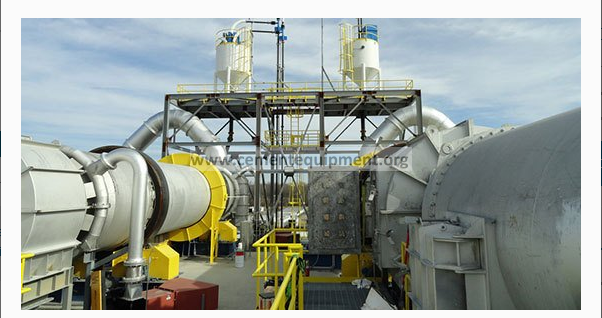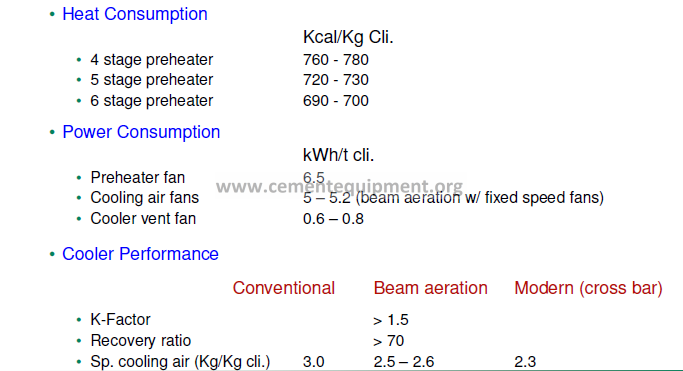Contents
Kiln Audit & Benchmarking
[wpecpp name=”package + Updates forever” price=”250″ align=”center”]

Kiln Audit : What it means?
• Review
• Present operation philosophy
• Operating parameters
• Operation / Quality targets
• Present Constraints
• Status of PID control loop operation
• Establish equipment / system performance
• Production
• Heat Consumption
• Power Consumption
• Efficiency
• Benchmark
• Past performance
• Supplier guarantees
• Type of equipment / system
• Anticipated performance
• Recommend for performance improvement
• Changes in operation philosophy, operating parameters, operation / quality Targets
• Modifications to individual equipment / system
Kiln Audit : Steps involved
• Pre-audit information checklist.
• Plant base information (Flow sheet, equipment details).
• Past performance data (Run / production / reliability factor, energy
consumption, quality).
• Type of fuels used and products manufactured.
• Present problems faced by plant.
• Measurement / sampling tools
• Instruments (availability, suitability, functioning, calibration)
• Measurement / sampling plan
• Measurements / sampling / analysis requirments with priority level.
• Frequency of measurement / sampling.
• Calculation tools
• Data from other plant audits
• Result Interpretations.
• Report writing
• Reference documents
Kiln Audit : Pre-audit information
• The Plant
• Location (place, nearest city, MSL, Ambient temperatures, % RH)
• Local line No. (if any)
• Supplier
• Year supplied
• Supplier guarantees (Production, heat consumption, power consumption etc).
• Preheater & Pre-Calciner
• No. of stages
• No. of strings
• Whether In line calciner / separate calciner / AS / AT
• Type of calciner: Low NOx / hot point etc.
• Cyclone sizes
• Calciner dimensions with sketch (showing firing / feed /Tertiary air entry point locations)
• Feeding arrangement (air lift / bucket elevator)
• Kiln
• Size (Diameter x Length)
• No. of supports (2 / 3)
• Slope (3.5 / 4%)
• Maximum speed, rpm
• Lining thickness, mm
• Installed motor power
• Cooler
• Supplier
• Supplier product code (e.g. FLS COOLAX 1284)
• Type (Conventional chamber aerated / Beam aeration etc.)
• Type of inlet (e.g. Fixed)
• No. of Grates
• Dimensions (width x Length)
• Effective Grate area
• No. of compartments
• No. of fans (Specify v-belt / direct drive, variable / fixed speed)
• Enclose sketch showing grate plate layout with aeration arrangement
• Vent air de-dusting arrangement (ESP, Heat exchanger + Bag filter)
• Emergency cooling arrangements (fresh air / water spray)
• Cooling air & Vent air fan specifications
• Tertiary air take-off point (through kiln hood / separate)
• Dust Settling Chamber in tertiary air line?
• Any hot air tapping (for raw / coal / cement mill)
• Under-grate dust collection arrangement (drag chain / hoppers with
pneumatic gates)
• Burner
• Supplier
• Supplier product code (e.g. FLS Duoflex)
• Type (Uni-flow / Multi-channel?)
• Miscellaneous
• Fuels used (with proportions, way of preparation)
• Sketch showing gas & material flows
• Present performance (Production, heat / power consumption)
• Present constraints
• Sketch indicating measurement / sampling point locations
• Modifications done w.r.t. original supply (e.g. changed to
Lafarge Burner, installation of Hurrivanes in preheater cyclone)
Kiln Audit : Samples & analysis
• Inputs
• Kiln Feed
• Fineness (Residues on 90 and 212m)
• Temperature
• Moisture
• Uniformity (KFUI),
• Homogenization (Standard deviation of CaO/CaCO3/RC3S at silo exit)
• Burnability (K1450)
• Coarse quartz and calcite content
• LOI
• Chemical analysis (incl. minor oxides and chlorine)
• Organic carbon
• Water of crystallization / hydration
• Sulfur as pyrites
• TC
• Fuel, as fired
• Moisture
• Fineness (Residues on 90 and 212m)
• Temperature
• Heat value
• Proximate analysis
• Ultimate analysis
• Outputs
• Clinker
• Temperature
• Sieve analysis
• Free lime
• Liter weight
• LOI
• Chemical analysis (incl. Minor oxides)
• Microscopy
• Dust from Preheater
• PSD
• LOI
• Chemical analysis (incl. Minor oxides)
• With in Process
• Bottom stage exit material
• LOI
• Temperature
• Chemical analysis (incl. minor oxides)
• Un-burnt Carbon
• Sample collection frequency
• Kiln Feed Every 2 hour
• Fuel Every 2 hour
• Clinker Hourly
• Dust from Preheater 2 samples
• PH bottom stage cyclone exit material 2 samples
Note: Except temperature, fineness, moisture, free lime and
liter weight, the detailed analysis could be performed on
composite samples.
From the composite sample, 3 sets to be prepared.
Set-1 To ARL
Set-2 To Plant Laboratory
Set-3 To be preserved by plant laboratory (till final report is released)
Kiln Audit : Field Measurements
• Preheater
• Preheater Exit Gas (Downcomer duct)
• Temperature
• Static Pressure
• Flow
• Gas analysis (O2, CO, CO2, SO2, NOx)
• Dust concentration
• Calciner exit
• Temperature
• Static Pressure
• Gas analysis (O2, CO, CO2, SO2, NOx)
• Each cyclone inlet and outlet
• Temperature
• Static pressure
• Gas analysis (O2, CO, CO2)
•Kiln
• Kiln inlet
• Temperature
• Static Pressure
• Gas analysis (O2, CO, CO2, SO2, NOx)
• Primary Air (Kiln / Calciner Burner)
• Flow
• Pressure
• Temperature
• Transport air for fuel
• Flow
• Temperature
• Cooler
• Cooling air
• Flow
• Temperature
• Pressure (at fan outlet, for each individual duct after flap damper)
• Cooler vent air
• Temperature
• Static pressure
• Flow
• Secondary air
• Temperature
• Kiln hood
• Pressure
• Tertiary air (at cooler end)
• Temperature
• Static pressure
• Flow (if possible)
Kiln Audit : Other Measurements
• Mass flows
• Kiln Feed
• Clinker (by drop test)
• Preheater exit dust (by drop test)
• Fuel to Kiln
• Fuel to calciner
• Power
• Kiln main drive
• Preheater fan
• Cooler vent fan
• Individual cooling air fan
• Total shop
• Surface temperatures
• Kiln shell
• All components of preheater (cyclones incl. risers, material pipes, smoke chamber,
kiln riser pipe, calciner vessel)
• Tertiary air duct
• Kiln hood
• Cooler walls
Remember! Always specify emissivity set in pyrometer for temperature measurement
•Remember!
• To cross-check CCR indications w.r.t. field measurements
• To have Minimum 2 sets of measurements
• To perform measurements during stable kiln operation
• To Specify measurement point locations
• To check suitability of flow measurement point (8D – 3D criteria)
• To record:
• Pitot tube constants
• Duct diameters at flow measurement point
• Emissivity used for surface temperature measurement
• Surface areas required for radiation loss calculation
• Transport air details (fuel / feed)
• Gas analyzer (2 Nos.)
• With CO, CO2, O2, NOx, SO2 sensor
• Digital manometer (1 each)
• Low range: 0–100 mmWG for Pd measurement
• High range: 0–4000 mmWG
• Thermocouple with indicator (2 Nos.)
• Radiation pyrometer (1 No.)
• Stroboscope / Taco meter (1 No.)
• Measuring tape (2 Nos.)
• Insulated container for clinker temperature measurement (1 No.)
• Pitot tubes
• S type, 2m long (2 Nos.)
• L type for primary air flow measurement (1 No.)
Make sure to have calibrated instruments!
Kiln Audit : Operating parameters
• Kiln Speed
• Preheater fan speed & damper opening
• Tertiary air duct damper position
• Cooler grate speeds
• Cooler under-grate pressure (way of calculation)
• Ratios used for grate-2, 3 speed w.r.t. grate-1 speed
• Individual cooler fan speed, damper opening
• Cooler vent fan speed, damper opening
• If SLC kiln, feed dividing gate (at PH Top) position
• Material dividing gate position for material diverted to kiln riser
• Primary air fan speed, damper opening
• Any other relevant parameter
Kiln Audit : Miscellaneous
• Check performance of PID control loops
• Check adequacy Sampling / measurement frequency from quality /
operation / process aspects
• Look for sources of air leakages / false air entry in to the system
• Understand present constraints in terms of operation / quality
• Analyze Stoppages / Slow downs
• Monitor safety
• Record fuel and power cost
Kiln Audit : Calculation tools
• Pitot Measurement
• For gas / air flow calculation
• Air Distribution
• Compare cooler flows w.r.t. recommended
• Cooler Heat Balance
• K – factor
• Recovery ratio
• Cooling efficiency
• Cooler loss
• Kiln Shell & Preheater losses
• For calculation of surface / radiation heat loss
• Heat & Mass Balance for Kiln
• Overall heat balance of pyro-processing section
Kiln Audit : Benchmarking
• Preheater Exit Gas Temperature
• 4 stage preheater 380oC
• 5 stage preheater 330oC
• 6 stage preheater 300oC
• Kiln Feed Homogeneity
• KFUI <14
• CaO standard deviation < 0.11
• Dust loss from preheater 8% of Kiln feed
• Pressure drop across preheater cyclones
• Top stage 80 mmWG
• Rest 60 mmWG
